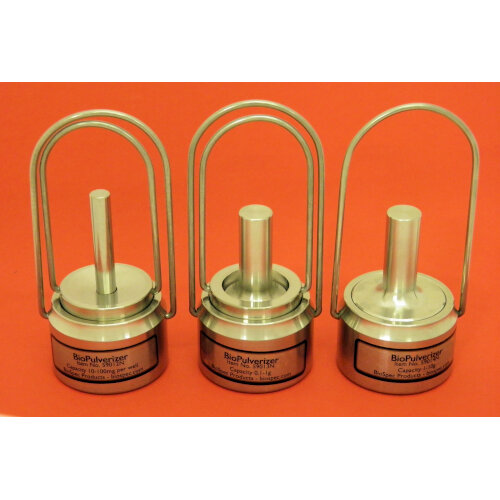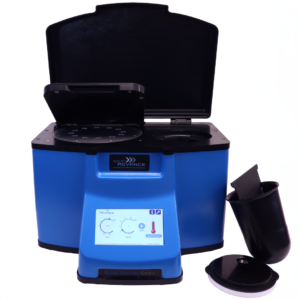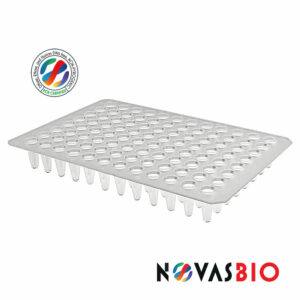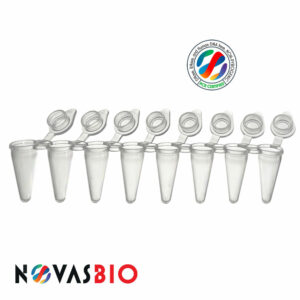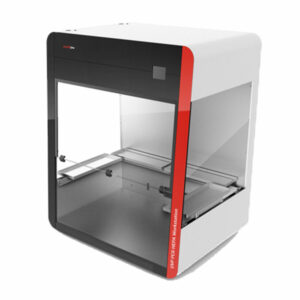The BioPulverizer reduces tissue hard-frozen in liquid nitrogen to a fine powder. Because of the high water content, most fresh tissue becomes as brittle as glass at liquid nitrogen temperatures. A sharp blow with a hammer will shatter it into tiny pieces. Called freeze-fracturing or cryopulverization, the method is especially useful for preparing tough, fibrous tissues such as skin, cartilage, cornea, etc. for subsequent rapid cell disruption using other techniques. The Bio-Pulverizer consists of a hole machined in a stainless steel base into which fits a special piston, or pestle. In a typical procedure, up to 10 g of animal or plant tissue is hard-frozen in liquid nitrogen and placed in the pre-chilled BioPulverizer. The piston delivers a blow to the brittle tissue reducing it to powder.
Cryopulverization with the Bio-Pulverizer is also useful for extracting labile tissue metabolites. And, for affinity proteomics studies, cryogrinding with a bead mill such as our MiniBeadbeater is the preferred way to disrupt cells for recovery of native protein complexes (see Biotechniques 58:103-119 (Mar 2015)).
How The BioPulverizer Works...
The 59012 MS Multi-Well BioPulverizer is made of stainless steel. The mass of the stainless steel will retain the cold long enough for you to complete your pulverization without adding additional liquid nitrogen. After being cooled to liq N2 temperatures, samples of hard frozen tissue are added to each of the 12 wells. One-by-one, a stainless steel pestle is inserted into each well and given a blow with the provided hammer. After removing the pestle, the cylindrical stainless steel sleeve is lifted off the base or platform, thus making accessible the hard frozen, powdered tissue remaining in a shallow well of the base. Working quickly, the still frozen powdered tissue is removed with a spatula and transferred to a user-provided tube for processing in a buffer or nucleic acid extraction media.
